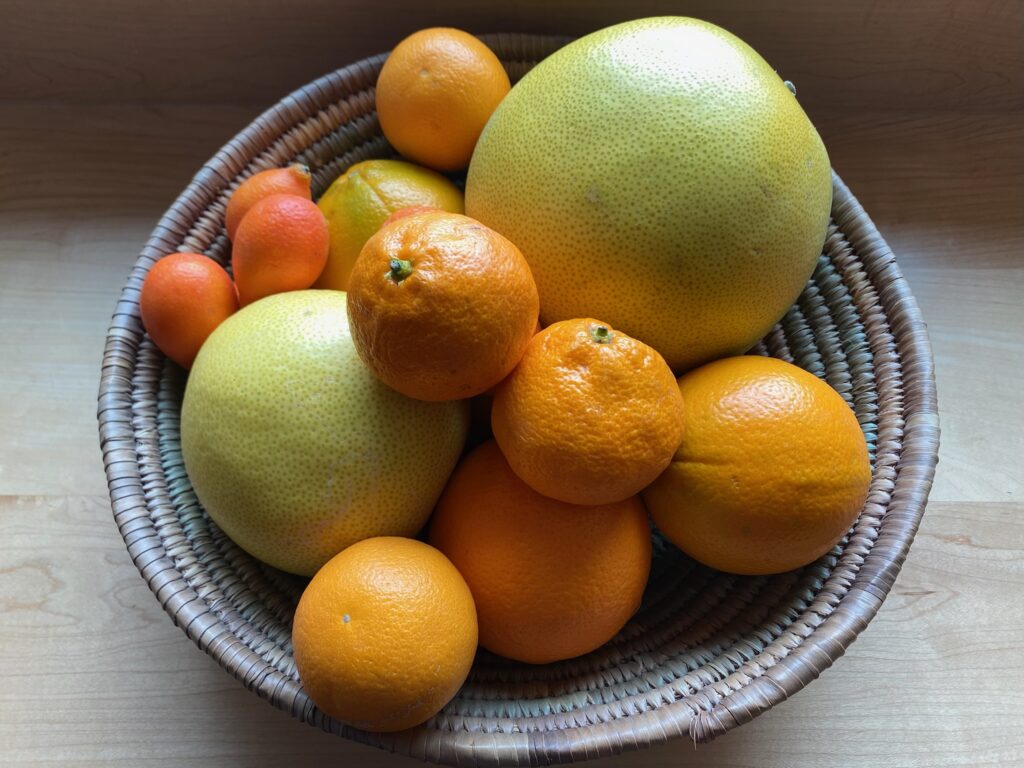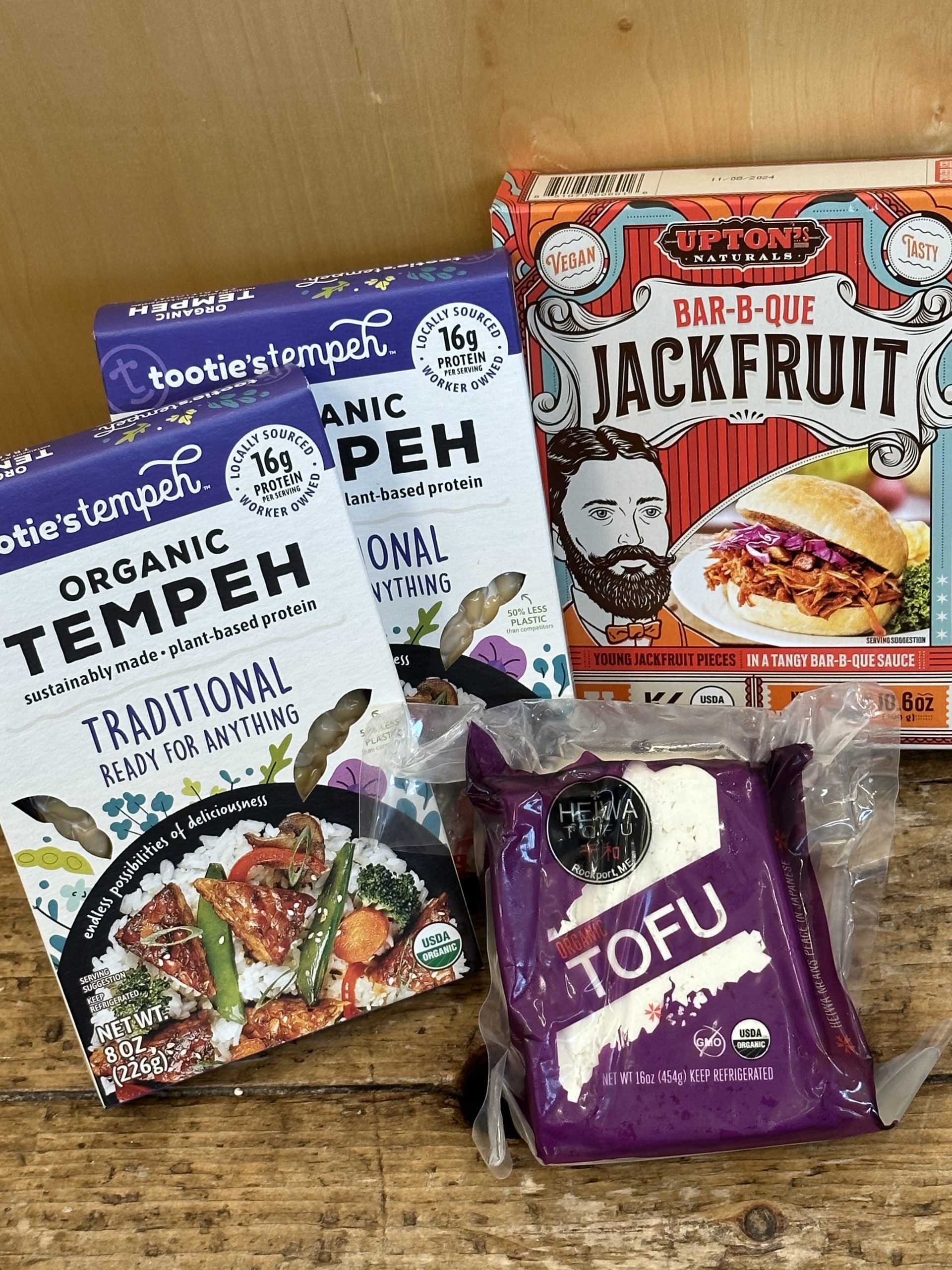All citrus fruits are produced by shrubs or trees from the large family Rutaceae. Oranges, lemons, limes, and grapefruits are common and usually available outside of the citrus season. During winter, stores like Blue Hill Co-op will flood with numerous varieties of citrus, some familiar and some more mysterious. This guide includes both common citruses and those that will occasionally turn up in the Produce Department.
First, a little botany:
Despite the vast array of citrus types, genetic analysis has shown that three species are original parents to all others— pomelos, citrons, and mandarin oranges. New citrus varieties have come to be through the process of hybridization, both accidental and purposefully initiated by humans. For example, sweet oranges like navel and valencia are a hybrid of mandarins and pomelos. Sometimes, the lineage is very complex, going through multiple hybrids before resulting in the desired variety. The origins of some citrus fruits are still a mystery. Growing evidence shows that kumquats and papedas may be two more original citrus fruits.

Bergamot Orange
Origin: a hybrid of lemons and bitter oranges
Taste: less sour than a lemon but more bitter than a grapefruit
Suggested use: enjoy a cup of Earl Grey tea with honey and cream
Bergamot is a citrus that is most used for its essence rather than for eating whole. It’s perhaps best known for flavoring Earl Grey tea but is also used in other confections like Turkish delights. It’s also used in fragrances and perfumes.

Blood Orange
Origin: natural mutation of the orange
Taste: sweet with raspberry notes
Suggested use:make a salad of sliced blood oranges and sliced fennel drizzled with olive oil
Blood oranges contain anthocyanins, a family of polyphenol pigments often found in flowers and fruit, but not typically in citrus. It causes the flesh and sometimes part of the peel to develop a beautiful deep red hue when the fruit experiences cold temperatures at night. It is believed they originated in Italy. They’re enjoyed both for their unique flavor and beauty.

Buddha's Hand Citron
Origin: one of the original citrus fruits
Taste: bittersweet, bright, floral
Suggested use: use for zesting or candy
This unique-looking fruit is a variety of citron, which is one of the original citrus fruits from which other citrus hybrids have developed. Unlike other citrus, Buddha’s hand doesn’t have pulp or juice. For this reason, it’s used for zesting and candied peels. It’s also used for religious purposes and fragrances. Buddha’s hand varieties may be open-hand with splayed finger segments or closed-hand with the segments together.
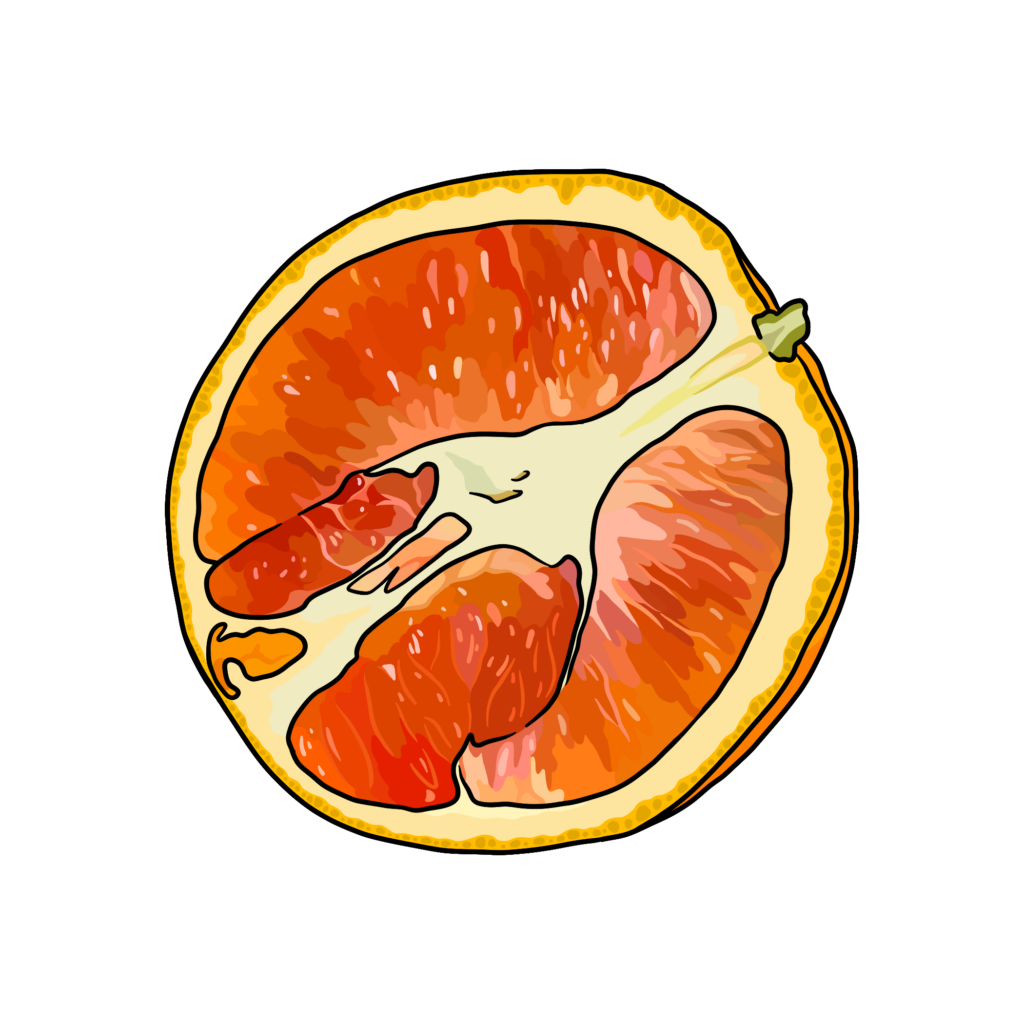
Cara Cara Navel Orange
Origin: natural mutation of a navel orange
Taste: sweet and mildly floral
Suggested use: while delicious in many preparations, it’s the perfect orange for eating straight out of the hand
Cara cara navel oranges are noted for their pretty pink hue and floral scent. They’re juicy, sweet, easy to peel, have little to no pith, and have low acid, making them an ideal snacking fruit. They’re also used for many fresh preparations, like salads, and cooked preparations, like curds and marmalades. Unlike the red hue in blood oranges, cara cara get their color from carotenoids.

Citron
Origin: one of the original citrus fruits
Taste: varies by type
Suggested use: citron is best used for zest or candied peel
Citrons are large citrus fruits that often look like huge, rough-skinned lemons. They are one of the original citrus fruits from which most others are hybridized naturally or with human intervention. Most citron varieties have little juice and pulp, so they are usually used for zest, candied peels, or fragrance. Citrons also have religious significance in Judaism, Buddhism, and Hinduism. It’s important to note that in some languages citron, or variations of the word, refer to lemons.
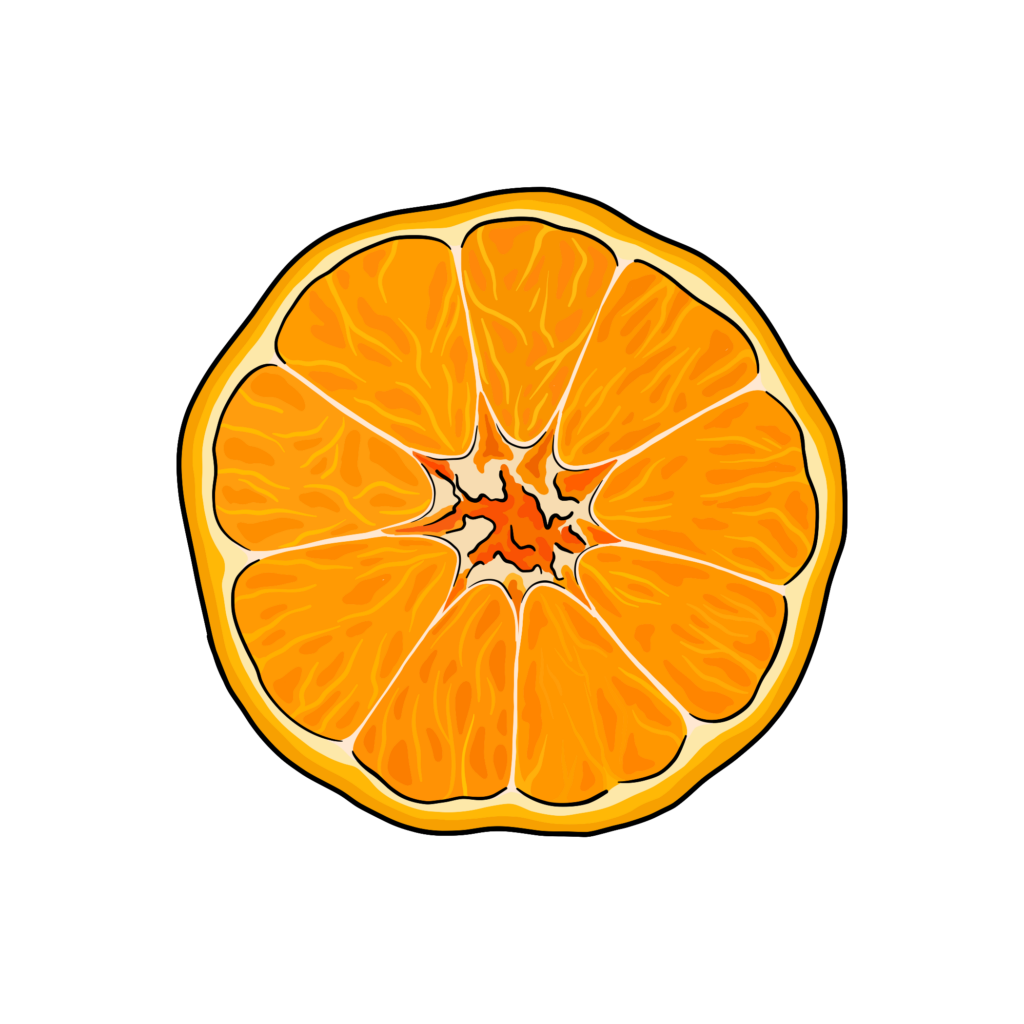
Clementine
Origin: hybrid of the mandarin orange and sweet orange
Taste: juicy and sweet
Suggested use: going for fancy – clementine upside down cake, going for easy – clementines and whipped cream
Clementines are a hybrid between a willowleaf mandarin orange and a sweet orange. They’re small with deep orange, glossy peels. Clementines are typically easy to peel and sweet, with less acid than oranges. Depending on the variety, they may or may not have seeds. They’re often sold in bags and enjoyed as an easy snack through the citrus season.
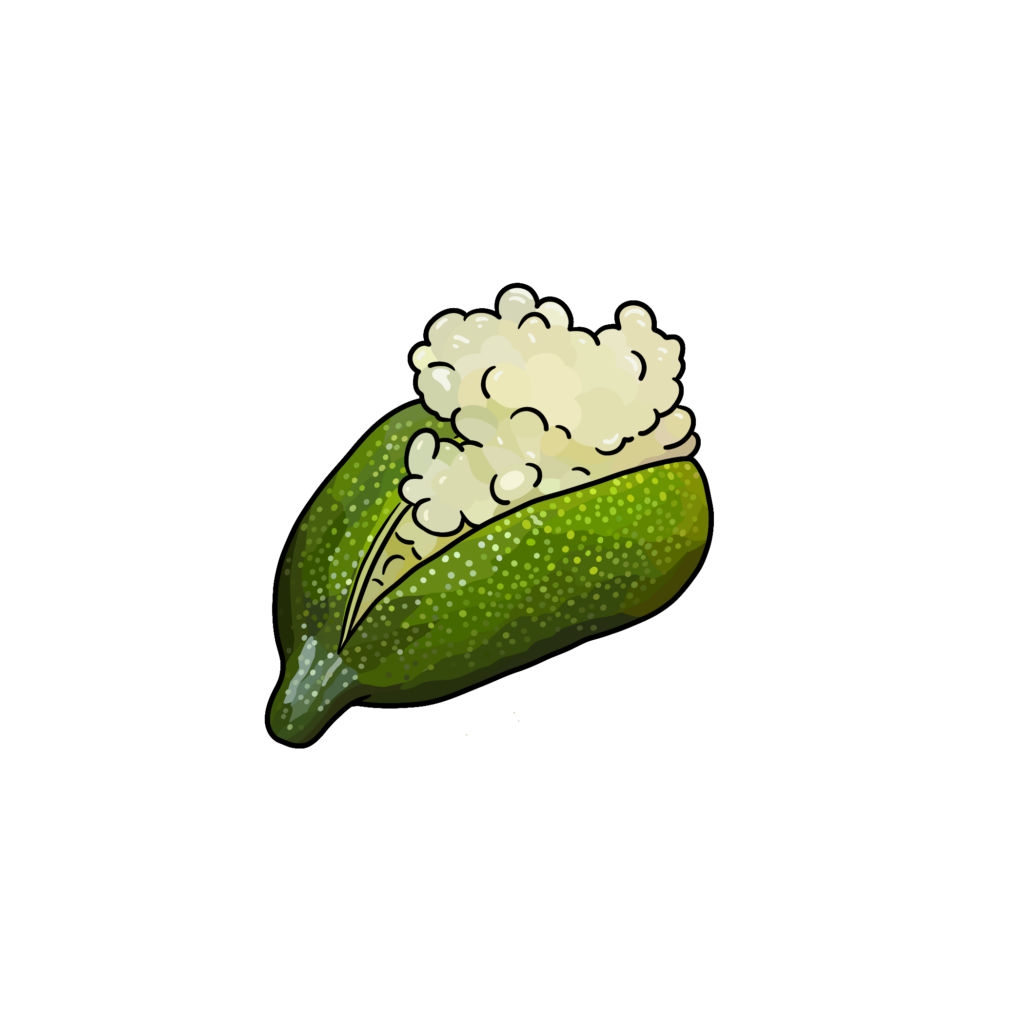
Finger Lime
Origin: botanical berry
Taste: pink pulp varieties are sweet and green are tart
Suggested use: garnish on avocado toast
Finger limes are an unusual type of citrus growing on a thorny shrub native to Australia. They are small and shaped like snap peas, with a hard lime-like peel. Finger limes are often called “citrus caviar,” which is apt because the interior flesh is made up of tiny pearls with the exact texture of caviar. The pearls pop with bursts of lemon/lime flavor when you chew them. They make an excellent garnish for all kinds of foods and drinks.
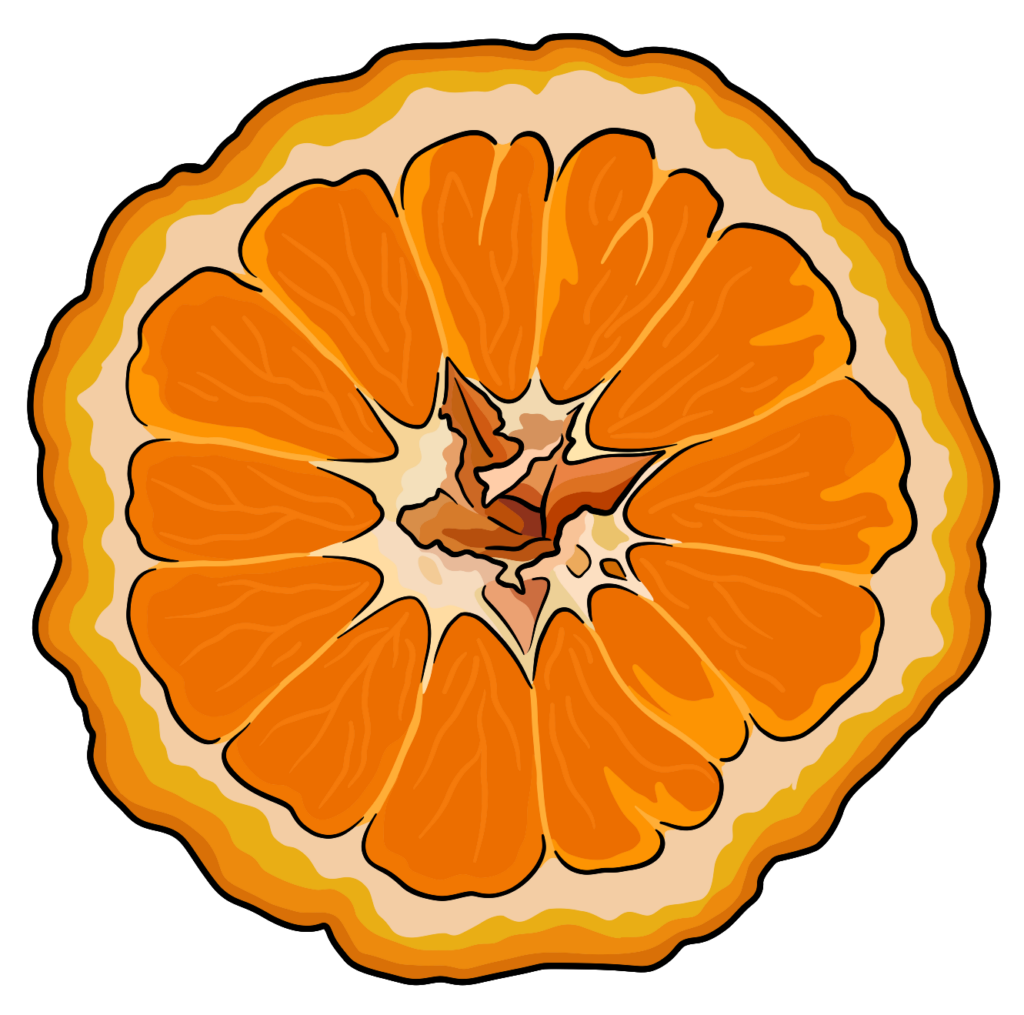
Mandarin Orange
Origin: one of the original citrus fruits
Taste: varies by variety but often sweeter than oranges
Suggested use: mandarin oranges, arugula, red onion, and toasted almonds dressed with olive oil, Dijon, apple cider vinegar, and sesame seeds
Mandarin oranges are one of the original citrus species from which many other citrus fruits descend. The ancestral mandarin was likely quite bitter, but most varieties today are hybridized with pomelos, which makes them quite sweet. Mandarins are small and oblate, with loose peels that are very easy to remove.
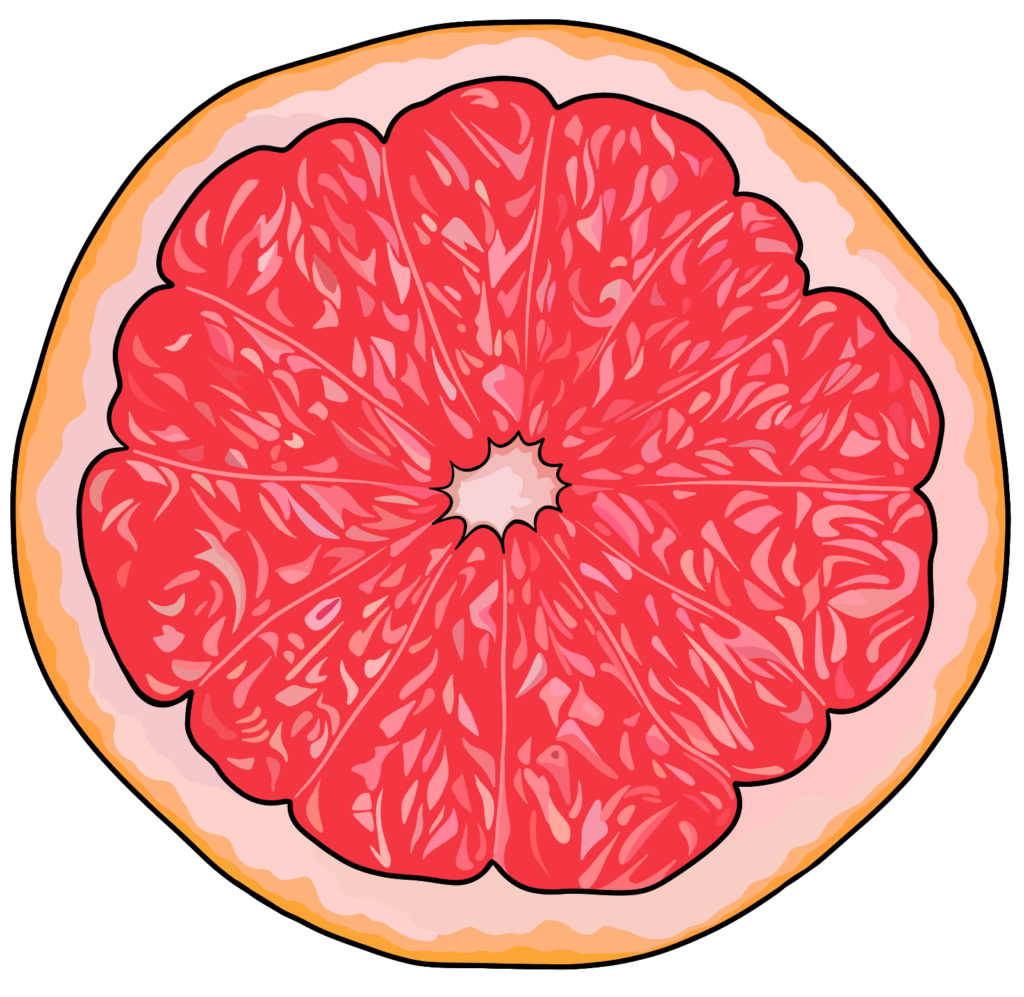
Grapefruit
Origin: hybrid of pomelos and sweet oranges
Taste: bittersweet
Suggested use: sliced and sprinkled with salt (which brings out the natural sweetness)
Grapefruits are large, sweet, semi-bitter citrus fruits that originated in Barbados. It is believed they were an accidental hybridization of the pomelo and the sweet orange, both of which were introduced to the area in the 1600s. Grapefruits vary in color from light yellow to deep red, depending on the variety. Grapefruits contain the chemical compound furanocoumarins, which is known to interfere with some medical drugs.
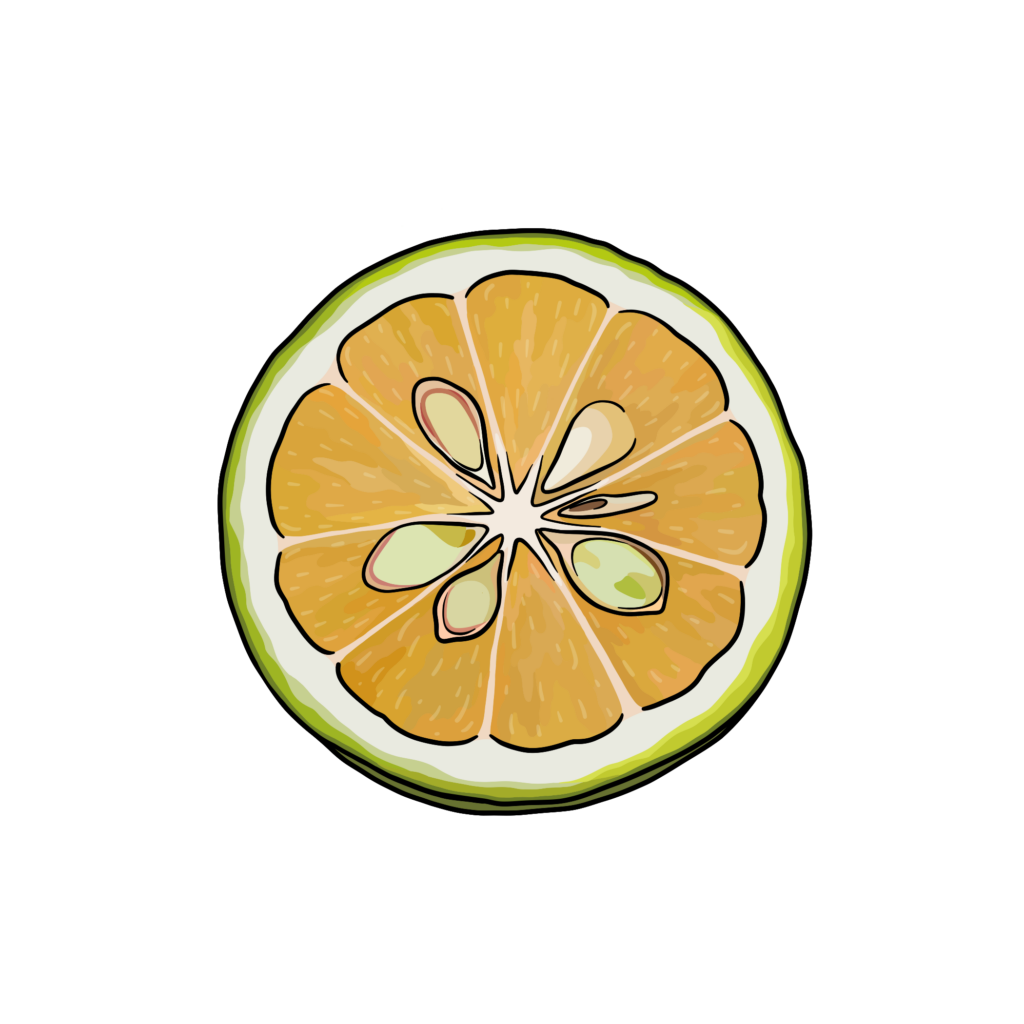
Kabosu
Origin: hybrid of the bitter orange and papeda citrus
Taste: sour and tangy
Suggested use: squeeze over grilled fish
Kabosu is a citrus popular in Japan, especially in Ōita Prefecture, Kyushu. It’s believed to be a hybridization of the bitter orange and a papeda citrus. They’re closely related to yuzu and have similar uses, paired with sashimi, grilled fish, and even miso soup and hot pots. Kabosu have a sharp, sour flavor and unique fragrance.
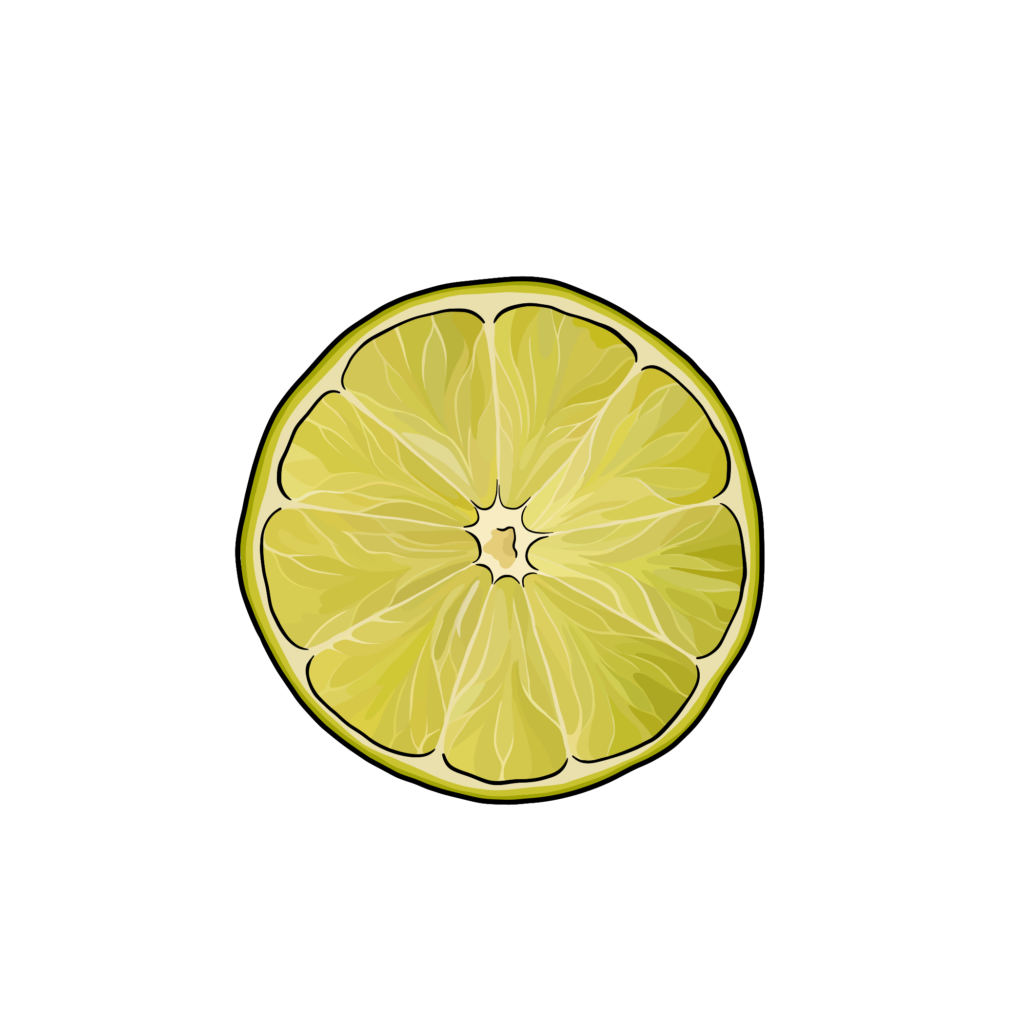
Key Lime
Origin: tri-hybrid of citron, pomelo, and micrantha
Taste: sour and tart but not too acidic
Suggested use: a classic Key lime pie
Key limes are a small, seeded variety of lime heavily associated with the Florida Keys, hence their name. The common lime, also known as a Persian lime, is actually a hybrid of Key limes and lemons. Key limes are slightly less tart and acidic than Persian limes. If left on the tree to ripen, Key limes will turn yellow, but they are generally harvested while still green. In the US, Key limes are maybe most famous for the Key lime pie, which is a custard pie often topped with meringue or whipped cream.

Kumquat
Origin: unknown, but possibly an original citrus fruit
Taste: sweet, tart, and tangy
Suggested use: candy in sugar syrup or slice and coat with olive oil, then roast at 375° F for 25 minutes
Kumquats are small citrus fruits that look like miniature oranges. The whole fruit is edible, peel included, making for a dynamic combination of sweet flesh and tangy peel in each bite. Kumquats may be an original citrus species, but it is unconfirmed. Kumquats have been hybridized to make many other citrus varieties. They are delicious on their own and also used for cooked and fresh preparations.

Lemon
Origin: hybrid of citron and bitter oranges
Taste: sour and tart
Suggested use: you can’t beat a nice lemon bar
Lemons are a very popular citrus enjoyed around the world. They’re believed to be a natural hybridization of citron and bitter oranges that first appeared in Asia– most likely Northern India. They were cultivated in the ancient world, spreading across the Middle East to Europe and Northern Africa. Today, lemons are used for countless foods, drinks, and other products.

Lime
Origin: hybrid of citron, pomelo, and mandarin oranges
Taste: tart acidic
Suggested use: make a tea with green tea, Thai basil, lime, and honey
There are several varieties of citrus called limes, but in the US, when something is labeled “lime,” it’s usually a Persian lime. Most limes are hybrids between citrons, pomelos, mandarins, or Micrantha (a type of papeda). Persian limes are a hybrid of Key limes and lemons. Compared with other lime varieties, Persian limes are larger, hardier, seedless, and have a longer shelf life, making them more desirable commercially.
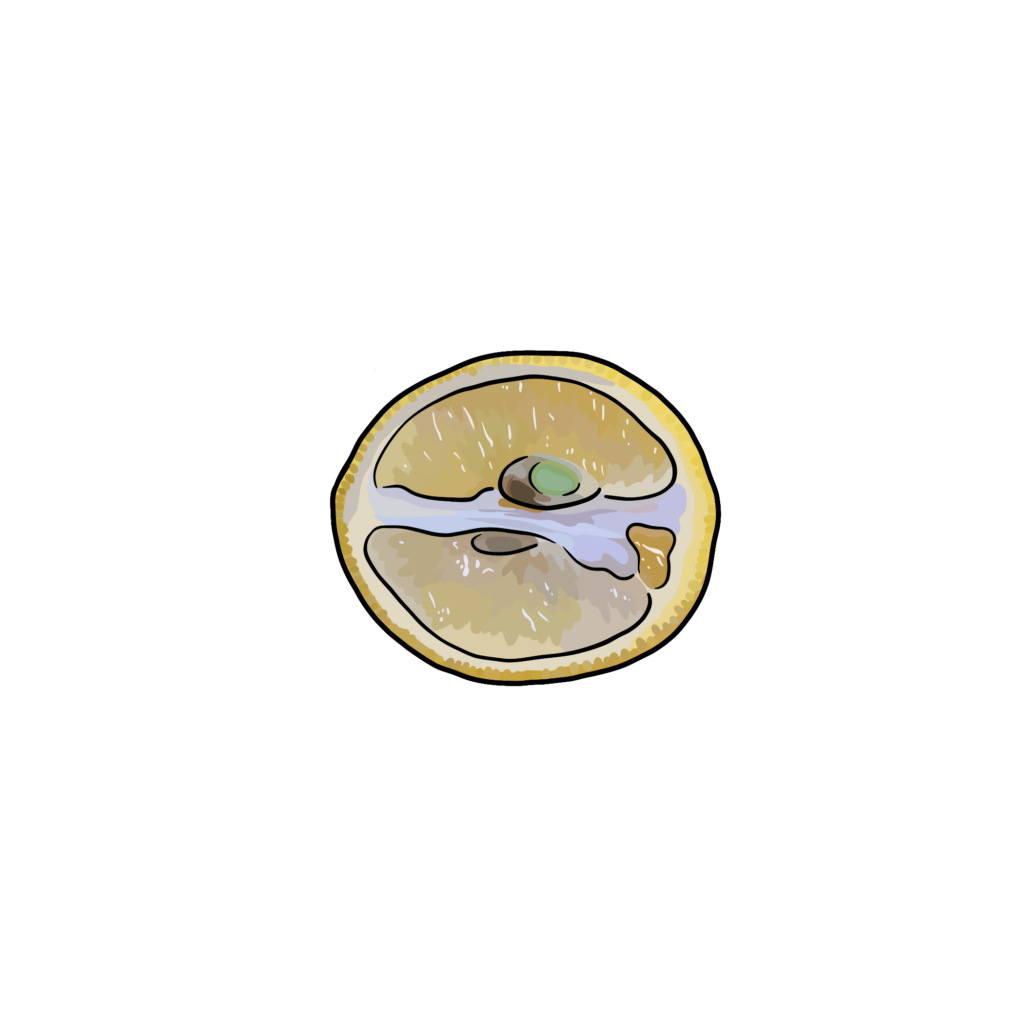
Limequat
Origin: hybrid of Key limes and kumquats
Taste: sweet, tart
Suggested use: candy in a simple syrup
Limequats are small, oval, greenish-yellow citrus fruits. They are a hybrid of the Key lime and kumquats. Like kumquats, the entire fruit is edible, including the peel, which is sweet. The flesh is tart and lime-like. They have small seeds or pips.
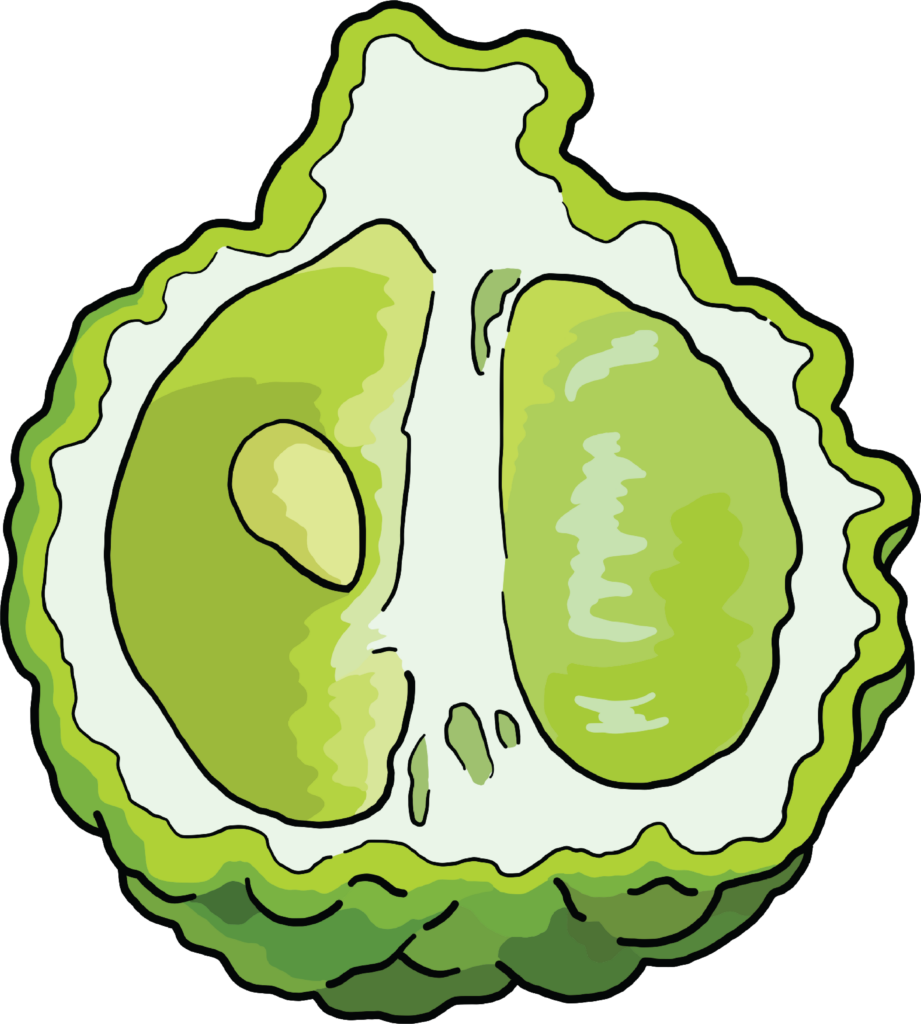
Makrut Lime
Origin: unknown, but it is possible they are descended from micrantha
Taste: vibrant with an earthy undertone
Suggested use: make a syrup with 1 cup water, 1 cup sugar, zest, and juice of 2 makrut limes, and pair with cocktails or mocktails
Makrut limes, also known as Thai limes or kaffir limes, are a Southeast Asian citrus. They are small and have a distinctly bumpy green to yellow skin. Both the fruit and the leaves are used extensively in Southeast Asian cooking.
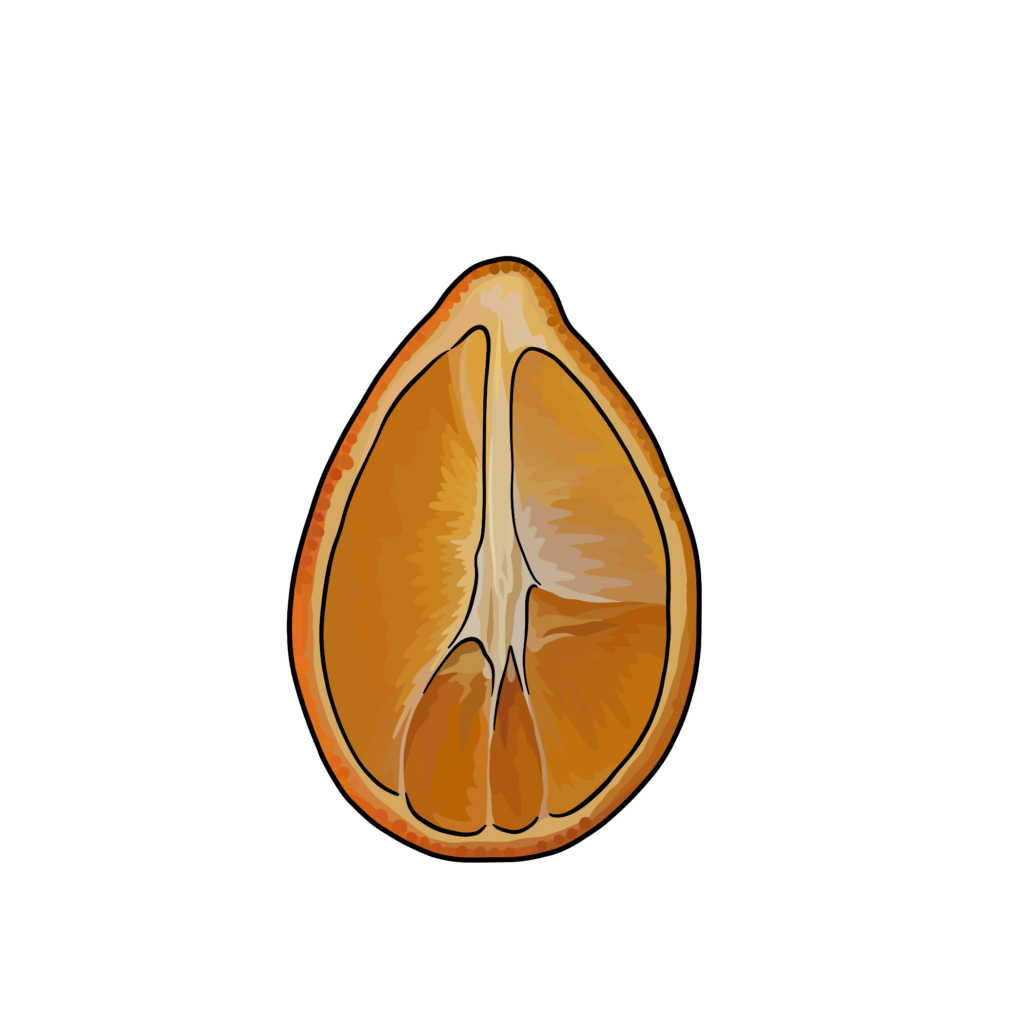
Mandarinquat
Origin: hybrid of mandarin orange and kumquat
Taste: sweet, tart
Suggested use: great for marmalade
Mandarinquats, sometimes called orangequats, are a hybrid of satsumas and kumquats. They’re a bit bigger than kumquats but are also entirely edible, with sweet skin and tart flesh. They have seeds.
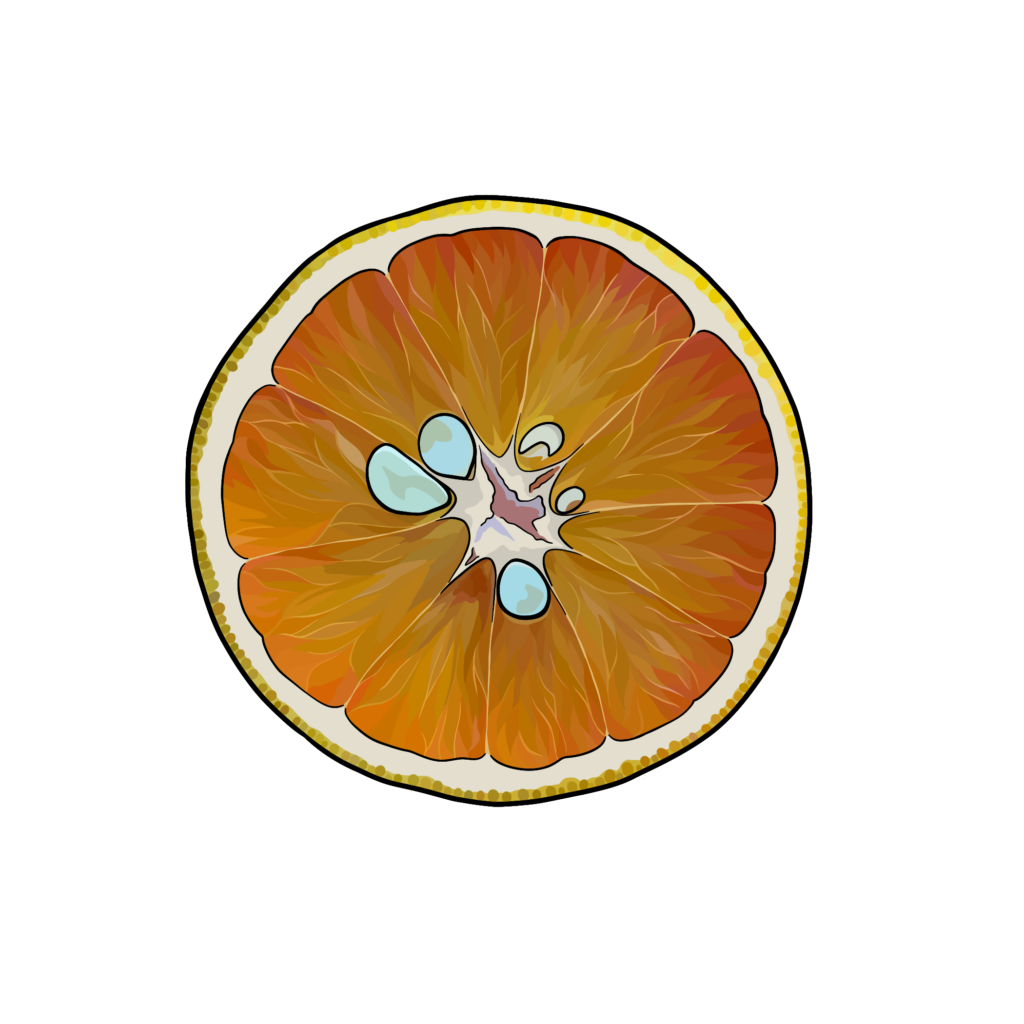
Mango Orange
Origin: natural mutation of the orange
Taste: sweet with floral and vanilla hints
Suggested use: toss into a salad and drizzle with lemon or lime to enhance the flavor
These oranges are loved for their vanilla aroma, floral flavor, and beautiful pink color. They’re believed to have originated in Italy sometime in the 15th century. Unlike the red hue in blood oranges, mango oranges get their color from carotenoids. Their unique flavor is delicious both on its own and used in fresh and cooked preparations.
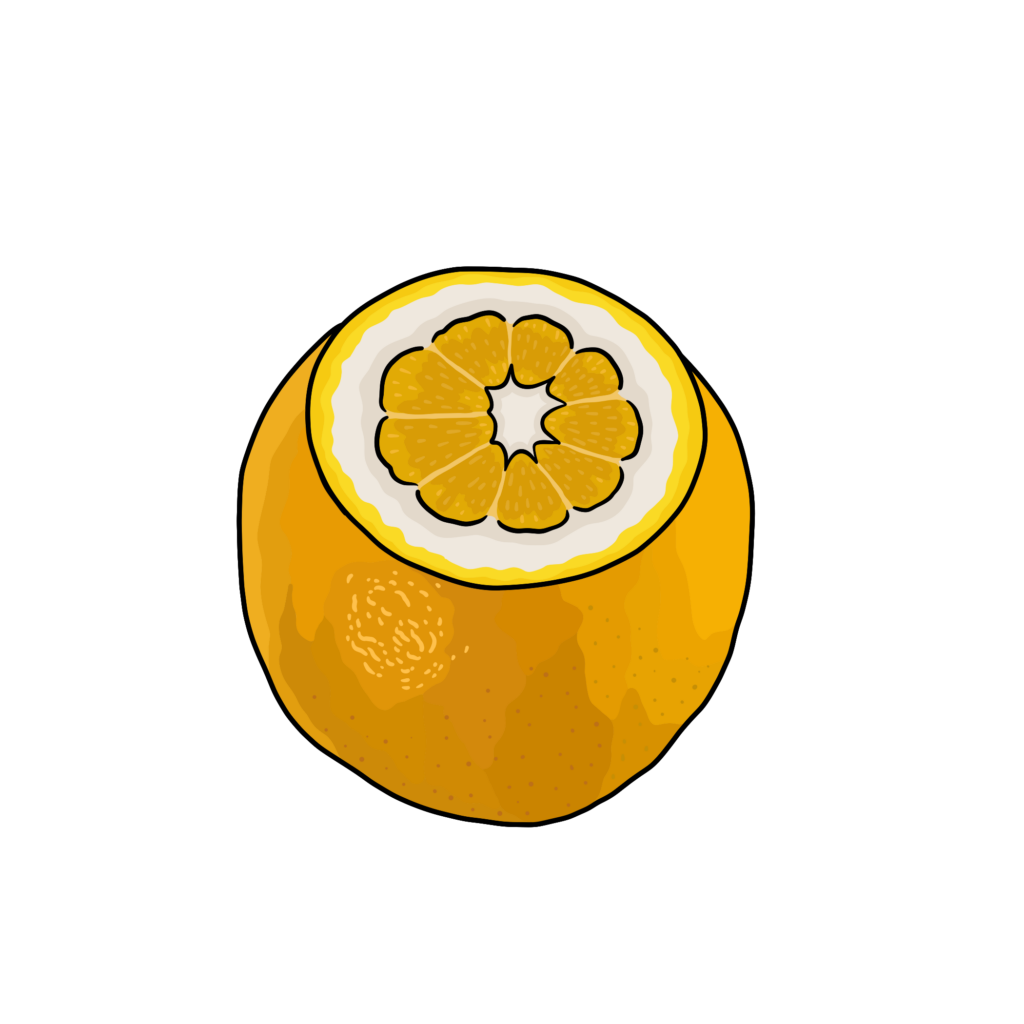
Meyer Lemon
Origin: cross between a citron and a pomelo and mandarin hybrid
Taste: less sour than a lemon with a mild sweetness
Suggested use: thinly slice and bake on top of focaccia with garlic and rosemary
Meyer lemons originated in China and were originally planted as ornamentals. They were brought to the US by agricultural explorer Frank Nicholas Meyer, from whom they got their English name. They gained popularity in the 1970s during California’s restaurant boom as chefs embraced their mellow, sweet flavor. Meyer lemons are a little smaller and rounder than common lemons, and slightly less sour. They can be used in fresh and cooked preparations.
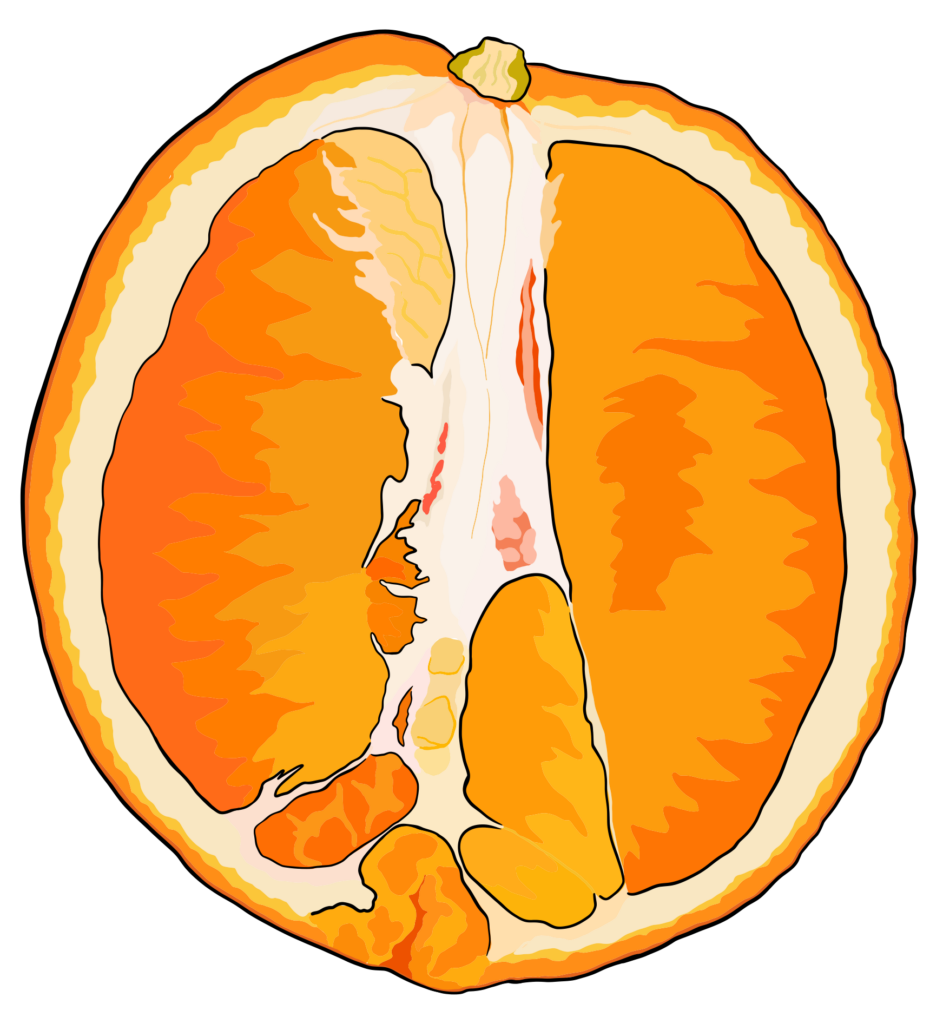
Navel Oranges
Origin: natural mutation of the orange
Taste: sweet, mildly acidic
Suggested use: make a salad with navel oranges, red onion, mint, and pomegranate seeds, dress with olive oil, lemon juice, paprika, and cinnamon
Navel oranges are a variety of oranges with a second small fruit that develops at their base. Originally, they were a natural mutation that appeared at a monastery in Brazil in the early 1800s. The secondary fruit protrudes slightly from the orange, bearing some resemblance to a human navel, hence the name. Navel oranges are great for eating out of the hand as their thicker skins make them easier to peel. They’re not as juicy as other varieties, so they aren’t suitable for juicing.
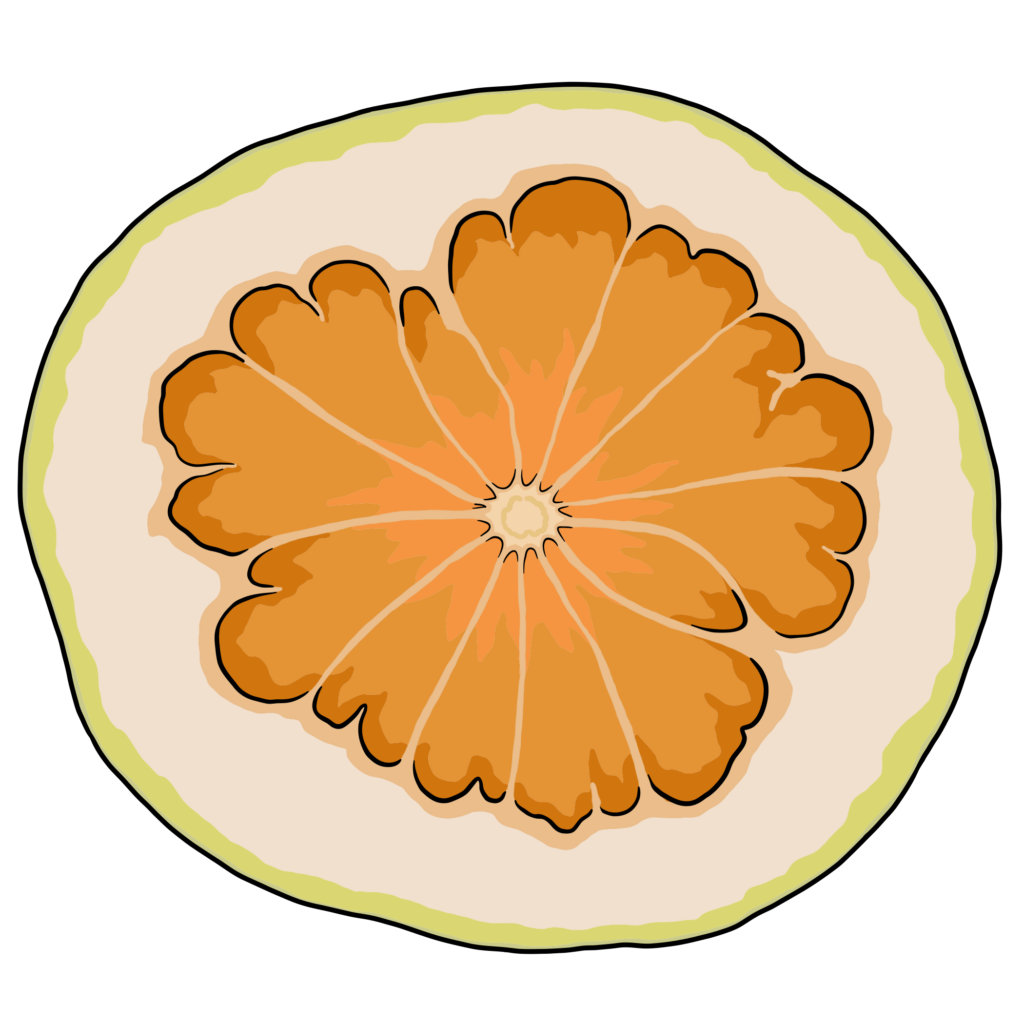
Pomelo
Origin: one of the original citrus fruits
Taste: similar to grapefruit but sweeter
Suggested use: peel away the pith and the bitter membrane around the segments to eat the inner fruit
Pomelos, sometimes called shaddocks, are the largest citrus fruit and one of the original citrus varieties from which other varieties are hybrids. A thick, spongy pith surrounds the inner segmented fruit, and a tough, bitter membrane encases each segment. When you peel off the membrane, you can enjoy the juicy, sweet pearls inside. Pomelos taste similar to grapefruits but are more mellow and sweeter. Pomelos are generally available only in the winter in the Northern Hemisphere and should not be missed!

Ponderosa Lemon
Origin: hybrid of pomelo and citron
Taste: lemon-like
Suggested use: Ponderosa lemonade
Ponderosa lemons, also called t’orange, are large and bumpy citrus fruits that originated by chance in Maryland in the 1880s. They were initially believed to be a hybrid of a citron and a lemon based on appearance, but genetic analysis has proved Ponderosa lemons to be a cross between a pomelo and a citron. In this way, they are not a true lemon, which has a mandarin component. However, they taste exactly like a common lemon and can be used for the same purposes.

Satsuma
Origin: descendant of mandarins with some pomelo components
Taste: sweet (one of the sweetest citruses), subtly tangy
Suggested use: layer into a parfait or just eat out of the hand
Satsuma are a variety of mandarins known for being easy to peel and one of the sweetest citrus varieties. There’s some debate about whether the satsuma originated in Japan or China, but they are named for the Satsuma region in southern Kyushu. Satsuma are cold, hardy plants; of all citrus, only kumquats will withstand colder climates. In humid areas, satsuma will ripen when the peels are still green, but in colder regions, they develop into a red-orange hue.
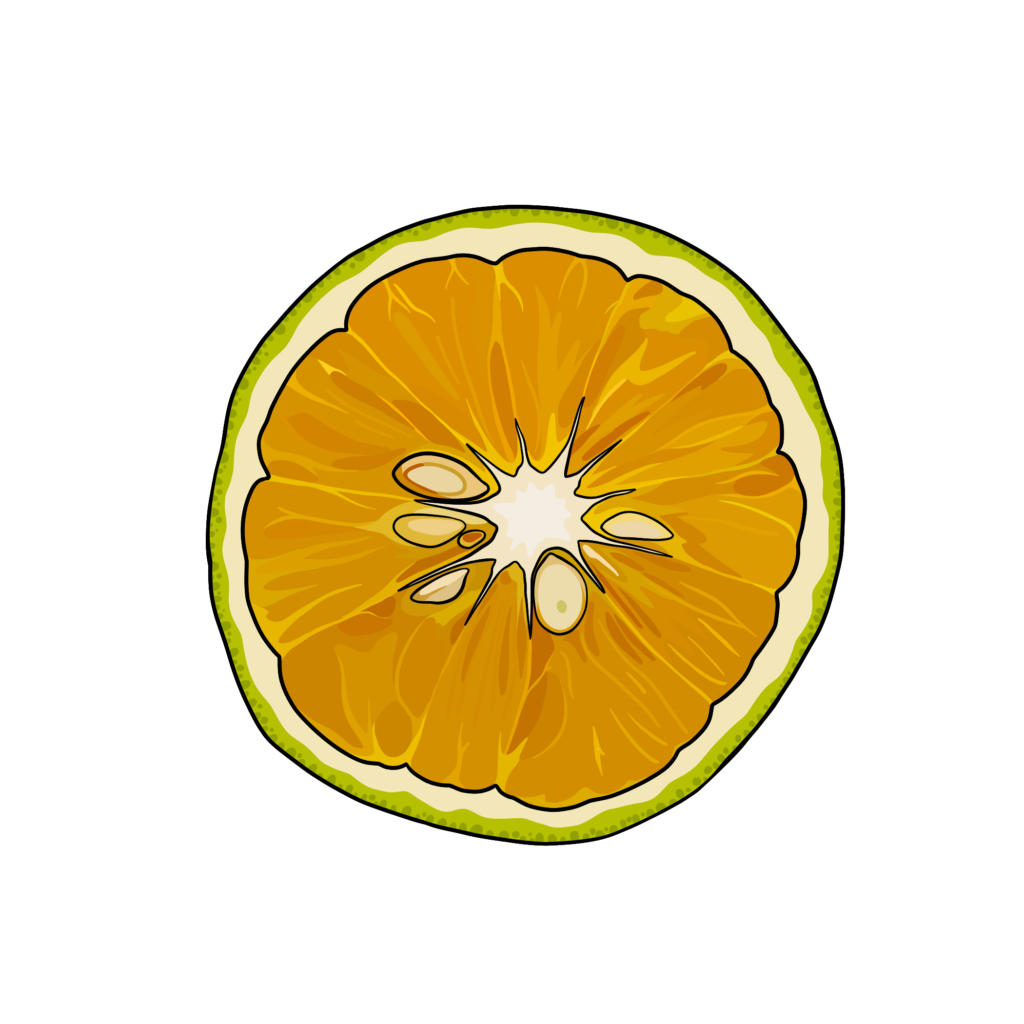
Sweet Lime/Lemon
Origin: various citrus hybrids
Taste: sweet and less acidic than common lemons and limes
Suggested use: slice into wedges and enjoy
Sweet limes and sweet lemons are various citrus fruits that resemble lemons and limes but are sweeter and less acidic due to the lower percentage of citrons in their ancestry. They are not descended from lemons or limes, but are a distinct group unto themselves. Due to the lower acidity, these fruits are often enjoyed straight out of hand, just as one might enjoy an orange.

Tangelo
Origin: hybrid of tangerine or mandarin and pomelo or grapefruit
Taste: tart and tangy
Suggested use: make a syrup with 2 tbsp sugar, 4 tbsp lime juice, 8 crushed cardamom pods, and a cinnamon stick and pour over a salad of tangelo slices
Tangelos are a hybrid citrus from a tangerine or mandarin and a pomelo or grapefruit, but the exact combination is unknown. However, the name is a portmanteau of tangerine and pomelo. They are about the size of an orange but have a distinct bump under the stem. Tangelo are easy to peel and have a sweet-tart and tangy flavor. Some varieties may have a honey undertone.

Tangerine
Origin: probably a variety of mandarin orange
Taste: sweet and strong
Suggested use: charred tangerines on toast
Tangerines are a variety of citrus that is either a type of mandarin, a distinct species, or a variety of mandarin with some pomelo ancestry mixed in. Tangerines are on the small side, have loose peels, and are bright orange. Although they look very similar to clementines, tangerines are slightly larger and not quite as sweet.
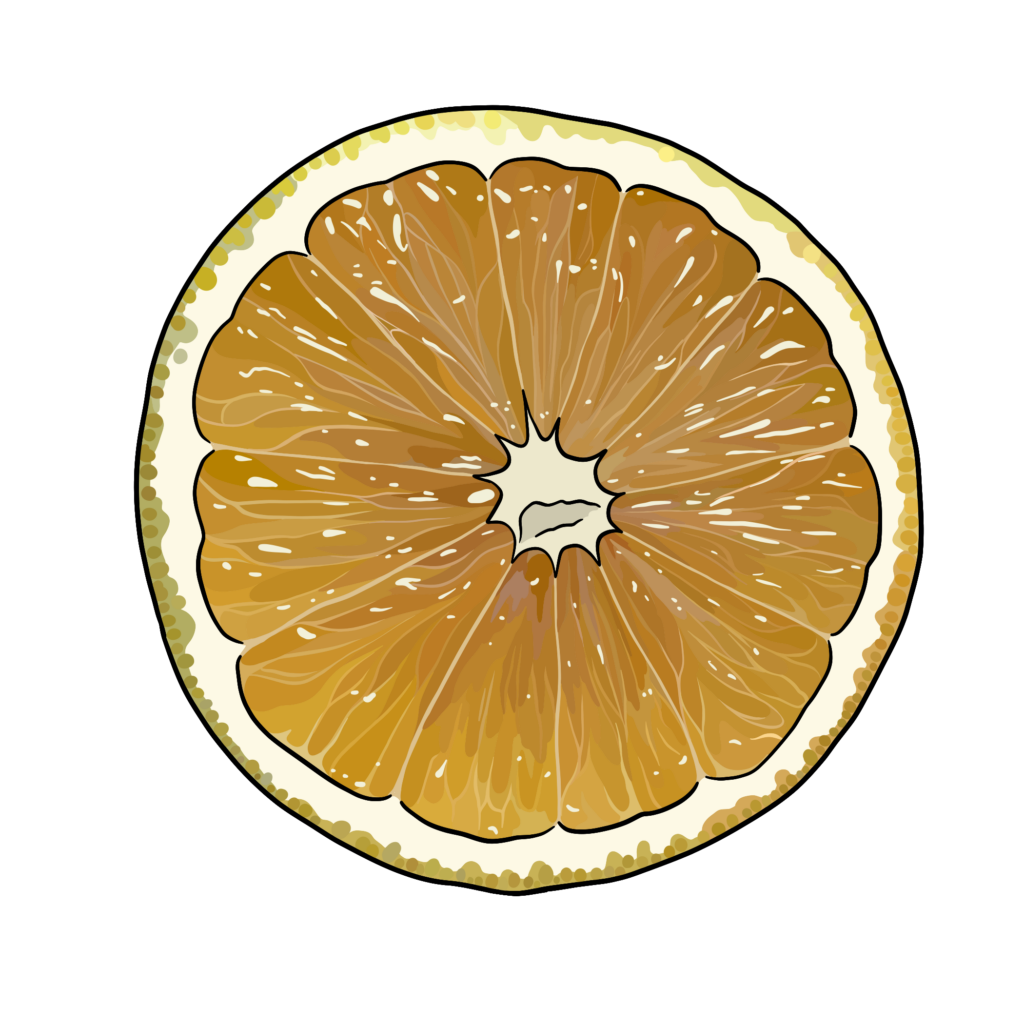
Valencia
Origin: variety of sweet orange, hybrid of pomelo and mandarin orange
Taste: sweet and juicy
Suggested use: a fresh cup of orange juice
Valencia oranges are a variety of sweet oranges, which are hybrids of pomelos and mandarin oranges. Valencia are primarily grown for orange juice, as they are one of the juiciest varieties. They’re also prized across the globe as the only orange variety in season in the summer rather than in the winter, like most citrus fruits. Valencia oranges are not as sweet as navel varieties.
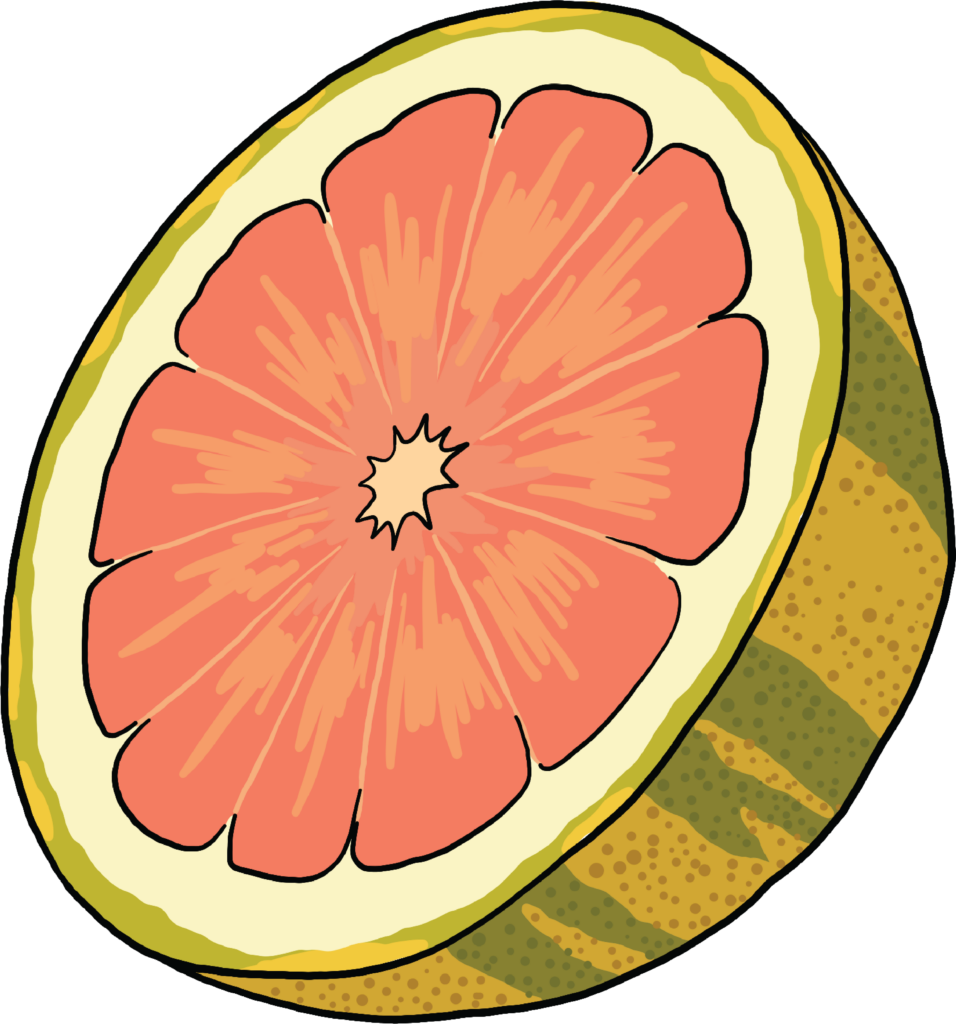
Verigated Pink Lemon
Origin: random mutation of a eureka lemon
Taste: sweet, tangy, tart, floral
Suggested use: use as a garnish and squeeze over savory dishes
Variegated pink lemons have a beautiful yellow and green striped peel and pink flesh. They were a chance mutation of a eureka lemon in the 1930s. It is rare to find them for sale, as the production is still small. They’re more commonly found in home gardens. It is important to note that the juice of pink lemons is clear, not pink. Pink lemonade is usually colored with other fruit juices like cranberry or with dye.

Volkamer lemon
Origin: hybrid of citron and mandarin orange
Taste: sour and slightly bitter
Suggested use: good for zesting
Volkamer lemons are a big, rough lemon variety. They’re pleasantly sour in flavor but also slightly bitter. They’re hardy plants and often used for rootstock to graft other citrus varieties onto.
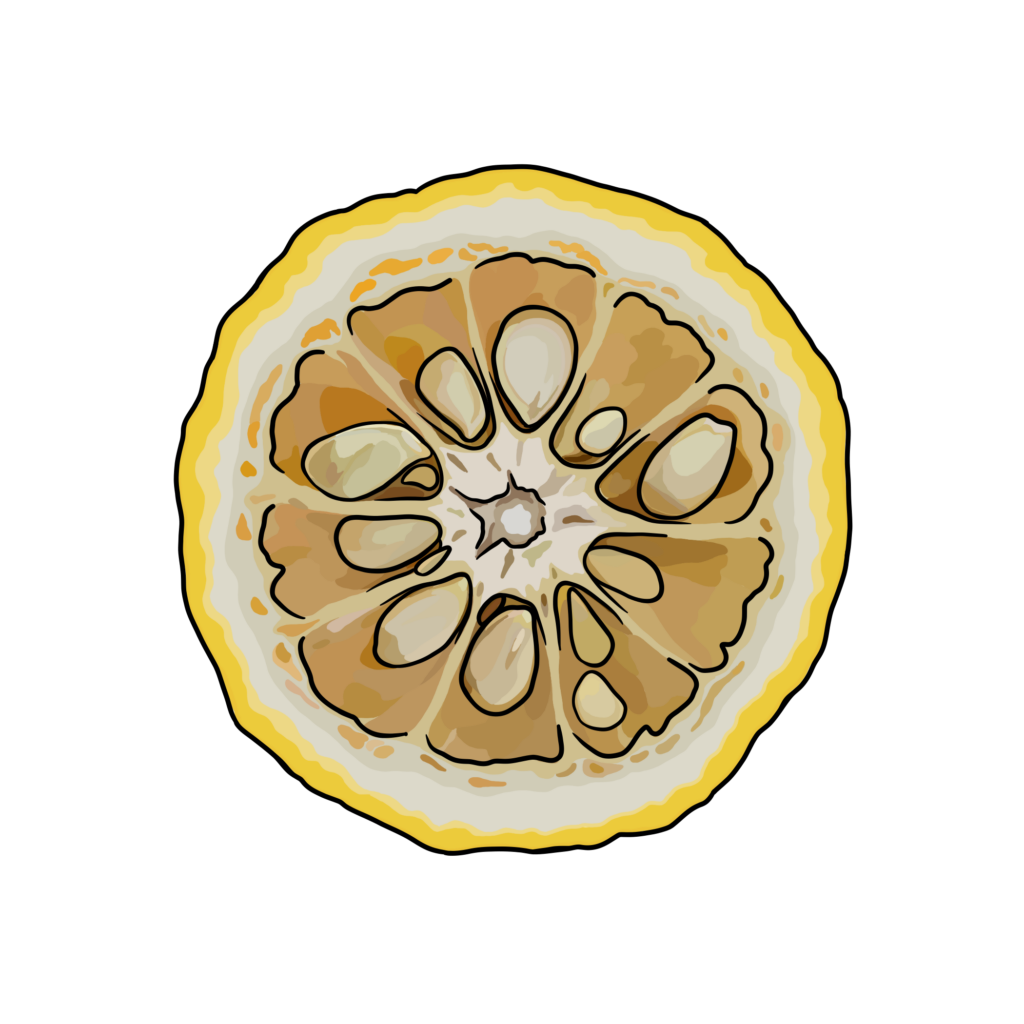
Yuzu
Origin: hybrid of mandarin orange and ichang papeda
Taste: tart, bitter, and mildly sweet
Suggested use: make a sauce with tamari, yuzu juice, ginger, and sesame oil pair with chicken or fish
Yuzu is a citrus fruit popular in East Asia, particularly Japan. They are a hybrid of mandarin oranges and ichang papeda. Yuzu are yellow to green in color, with somewhat bumpy skin. They’re generally around 3 inches in diameter but can grow to the size of a grapefruit. The flavor is unique and sometimes described as a cross between a lemon, a grapefruit, and an orange. Yuzu are mainly cultivated for culinary use, with their zest and juice used widely in Japanese cuisine.


